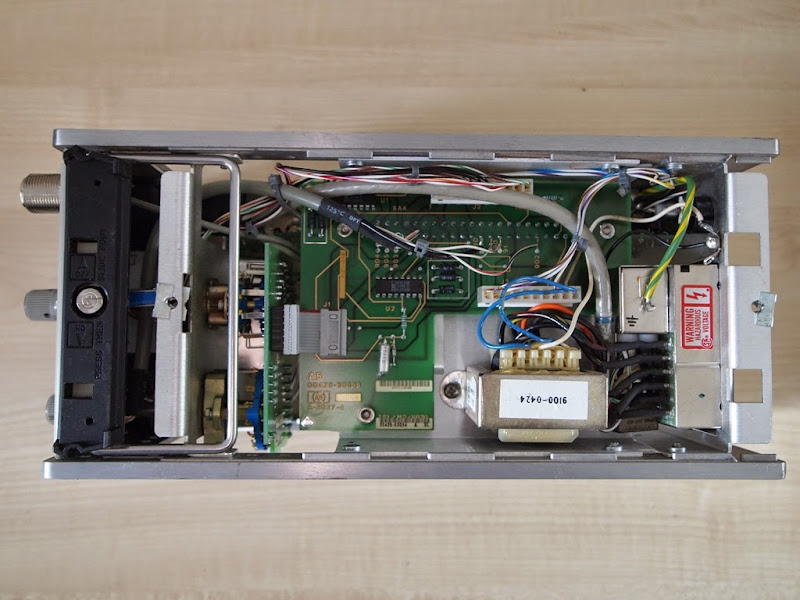I bought this HP 435B from eBay with the intention of reusing parts of it in a project. It's a really nice, well built unit, but without the power sensor they're fairly worthless. I got this one for about USD25, including shipping. Physically it's pretty tidy, and it probably works (not that I care).


It's constructed of two cast aluminium side frames. Folded aluminium braces sit between these, and painted aluminium panels screw to the outside.




The main riser board, A4, contains most of the actual meter circuit, as well as the power supply. There are five amplifier stages, as well as support circuitry for the sensor. The grey box appears to be potted, and contains the auto zero circuit. The power supply can work from mains or a 28.8V Ni-Cd battery, and includes charging circuitry. Mine doesn't have the battery option fitted.

The small board in the can behind the panel meter, A3, provides the reference output for calibrating the sensor.

The only horizontal board, A5, connects the other boards together. It also holds the two range switch attenuators, made up of two ADG201 CMOS switches and some precision resistors. Each group of precision resistors is surrounded by a grounded guard trace.
